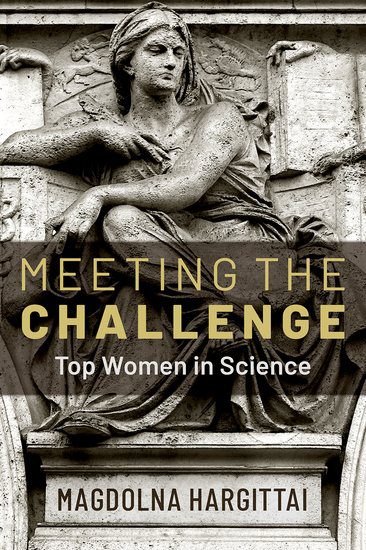Arpan K. Banerjee
Solihull, United Kingdom

Women have long faced difficulties in acceptance to scientific fields. Science today remains male-dominated, but there are more examples of brilliant female scientists who have broken through the so-called glass ceiling. In her preface to Meeting the Challenge, Magdolna Hargittai illustrates this point with the 2020 Chemistry Nobel Prize winners, Jennifer Doudna and Emmanuelle Charpentier, who received the award for their contributions to gene editing.
The author, herself a successful scientist and a professor of structural chemistry in Budapest, has published widely on the topic of female scientists from the present and past. In this current book, she profiles the lives of some 120 female scientists and inventors from disciplines as diverse as astronomy, mathematics, physics, chemistry, crystallography, ecology, biology, and medicine. Some names are familiar, such as the Curie family, mathematician Ada Lovelace, and crystallographer Dorothy Hodgkin. Also included are astronomer Mary Somerville, reproductive biologist Ann McLaren, ecologist Rachel Carson, and physician Elizabeth Garrett Anderson.
There are also many women who made important advances in their fields but whose names are less well known. In the field of astronomy, we learn about Elisabeth Hevelius from Amsterdam, who in the seventeenth century co-wrote Prodormus Astronomiae, which catalogued 1500 stars. Her husband was solely credited with authorship despite Elisabeth’s critical contributions. In the field of physics, everyone is familiar with Einstein. However, his first wife, Mileva Maric, was also a brilliant mathematician who helped Einstein with his early work. Gertrude Elion was a brilliant chemist and the Nobel Laureate in Medicine in 1988. Her work on mercaptopurine and the synthesis of the first immunosuppressants enabled organ transplants to succeed.
In the section on medicine, it is interesting to read about the first African American female doctor, Rebecca Lee Crumpler, who studied at the New England Female College and spent most of her life working in Boston in the second half of the nineteenth century. The section also includes Annie McCall, who founded the Clapham Maternity Hospital; Jane Walker, a pioneering tuberculosis specialist in the early twentieth century; and Lilian Lindsay, the first female dentist to qualify in Britain in 1895. More recent examples of female leaders include Sheila Sherlock, a distinguished hepatologist of international renown from the Royal Free Hospital, London and Dame Cicely Saunders, the British founder of the modern hospice movement.
The final section on ecology provides interesting profiles of the Chinese scientist and Nobel laureate Youyou Tu and her work on artemisinin and malaria, primatologist Jane Goodall, and entomologist Miriam Rothschild.
This book is accompanied by a comprehensive index and is a fascinating collection of portraits and vignettes of female scientists. The author covers a wide range of scientists from diverse backgrounds and different continents, which illustrates that although obstacles have been considerable, women scientists worldwide were and are succeeding in their aims. Reading about their lives and achievements and contributions to humanity is both a humbling and educational experience.
Meeting the Challenge: Top Women in Science
Magdolna Hargittai, Oxford University Press, 2023
ISBN 9780197574751
DR. ARPAN K. BANERJEE qualified in medicine at St Thomas’s Hospital Medical School. London. He was a consultant radiologist in Birmingham 1995–2019. He was President of the radiology section of the RSM 2005–2007 and on the scientific committee of the Royal College of Radiologists 2012–2016. He was Chairman of the British Society for the History of Radiology 2012–2017. He is Chairman of ISHRAD. He is author/co-author of papers on a variety of clinical, radiological, and medical historical topics and seven books, including Classic Papers in Modern Diagnostic Radiology (2005) and The History of Radiology (OUP 2013).

Leave a Reply